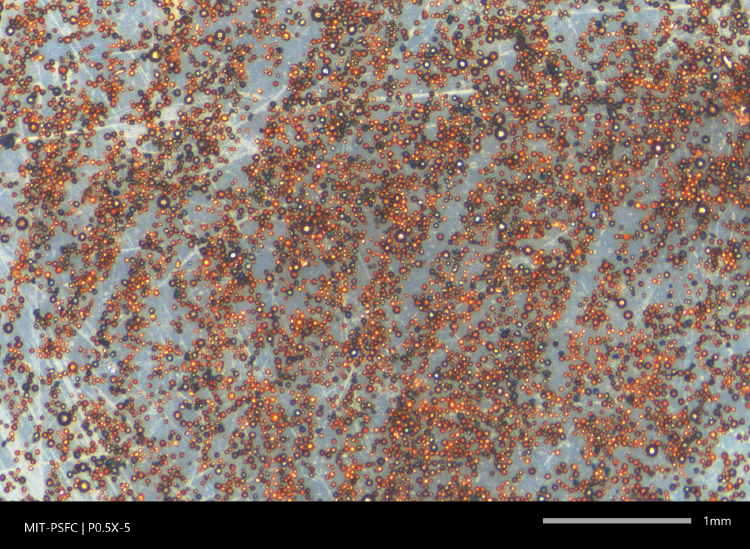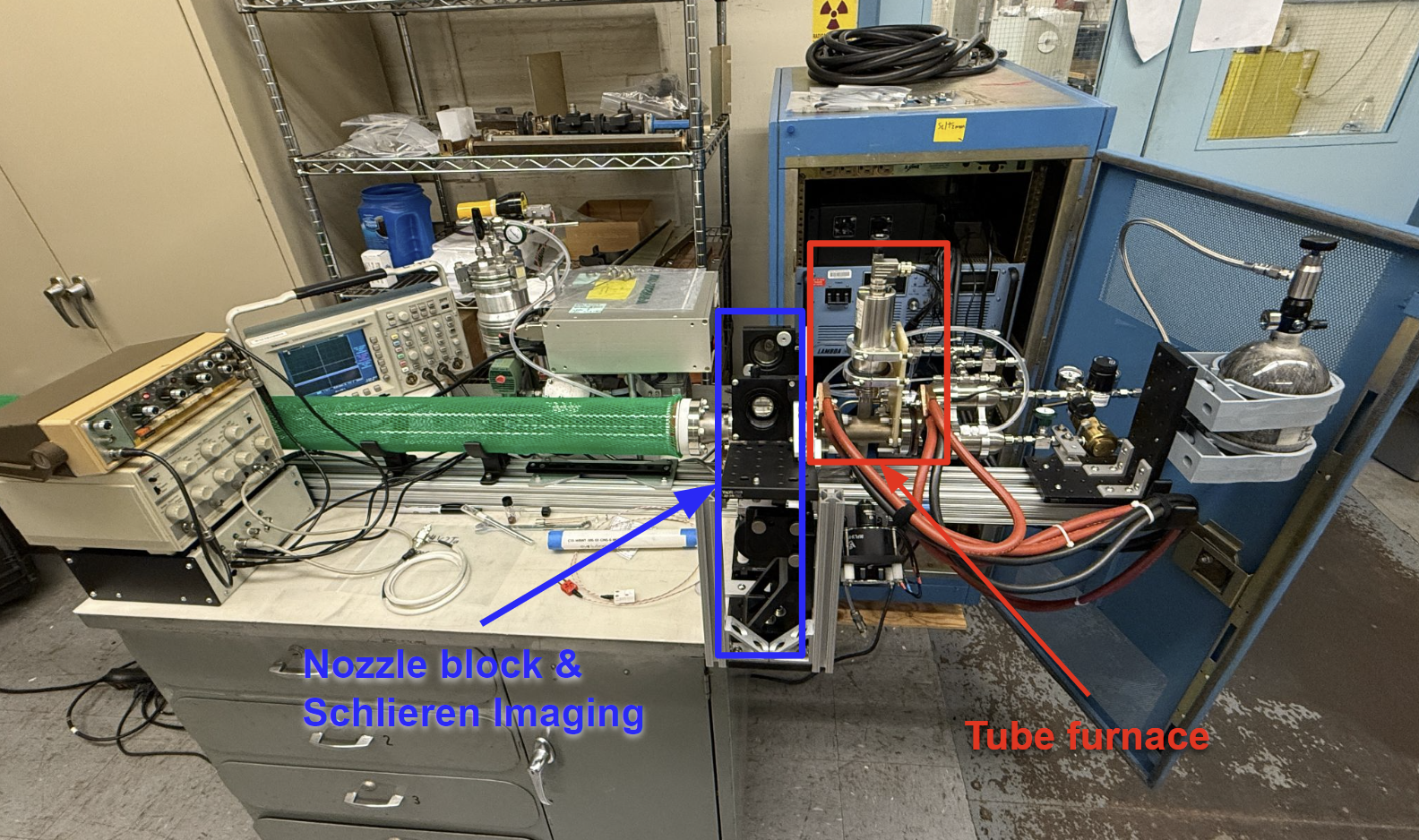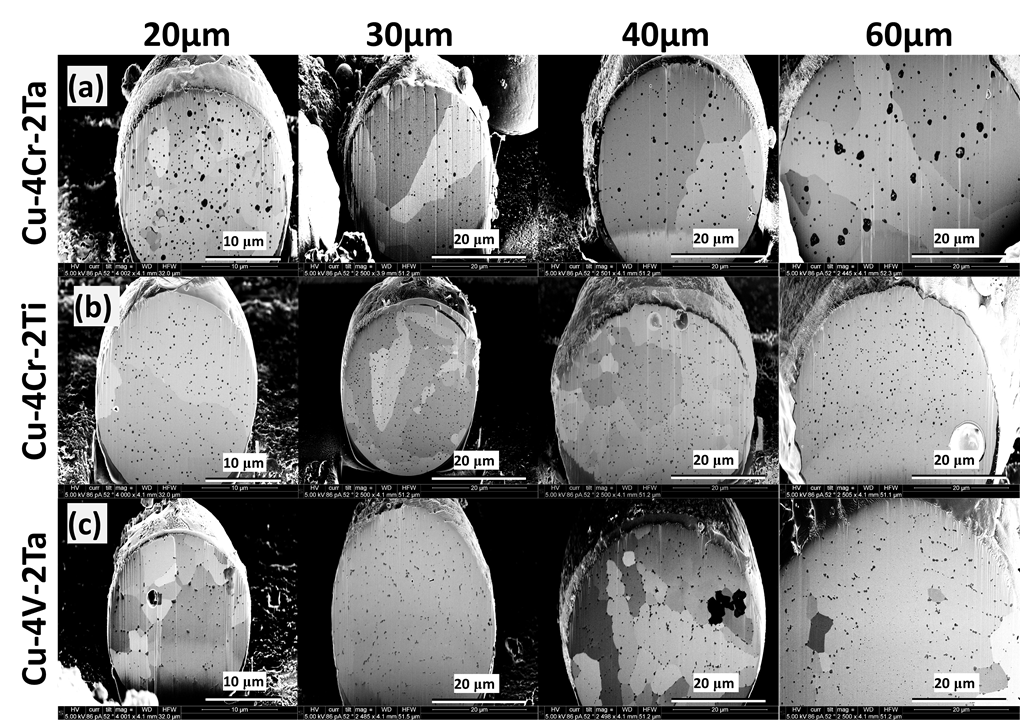Gas Atomization System (Part 2: Assembly and Atomization)
Research with MIT Plasma Science Fusion Center

- Mia Chen
- 2 min read

Manufacturing and Assembly
Over the summer we made big progress on integrating all the parts of the gas atomizer into a functional system. The entire system needs to be evacuated of air and filled with argon before atomization to prevent oxication, so I machined some custom vacuum adapters before I left for the summer.
With these adapters done, we were able to put together the full atomizer assembly! The furnace (on the right) is a graphite tube furnace that’s resistively heated by two water-cooled copper electrodes and controlled by closed loop feedback from an optical pyrometer. The molten metal is then fed into the nozzle block, which houses the 3D printed nozzle and has clear viewports for our schlieren imaging system to capture the atomization process in real time. The atomized powder is then launched into the glass tube to cool.

Atomization
After assembly, vacuum test, and a few (a lot) more nozzle iterations we had our first successful atomization! Here’s video of GRCop-42 undergoing atomization, we can see some nice Mach triangles forming from the nozzle, and the metal launches out at around 8 seconds into the video.
Here’s a video of the atomization happening with the backlight off, you can see the glowing copper particles breaking up as they get hit by the gas jets:
With a working atomizer, we tested alloys of Cu-4Cr-2Ta, Cu-4Cr-2Ti, Cu-4V-2Ta all of which form Laves Phases like the Chromium-Niobium precipitate in GRCop-42. We then collected these powders and sectioned them to inspect under the microscope.

Next Steps
We have successfull atomization and the precipitate distributions of the atomized powders look promising, but there is still much more to be done. My primary next steps are:
- modify the nozzle block assembly to incorporate pressure and flow sensors
- numerically model flow rate and cooling rate
- design a cold spray adaptation to the gas atomizer system so that we can make samples to undergo ion beam bombardment to simulate neutron damage